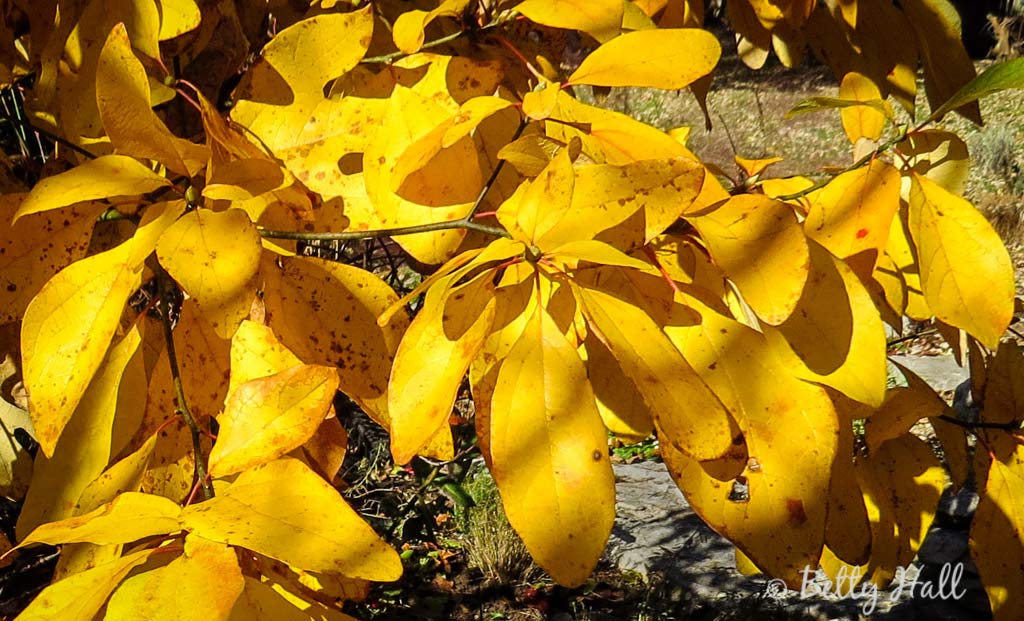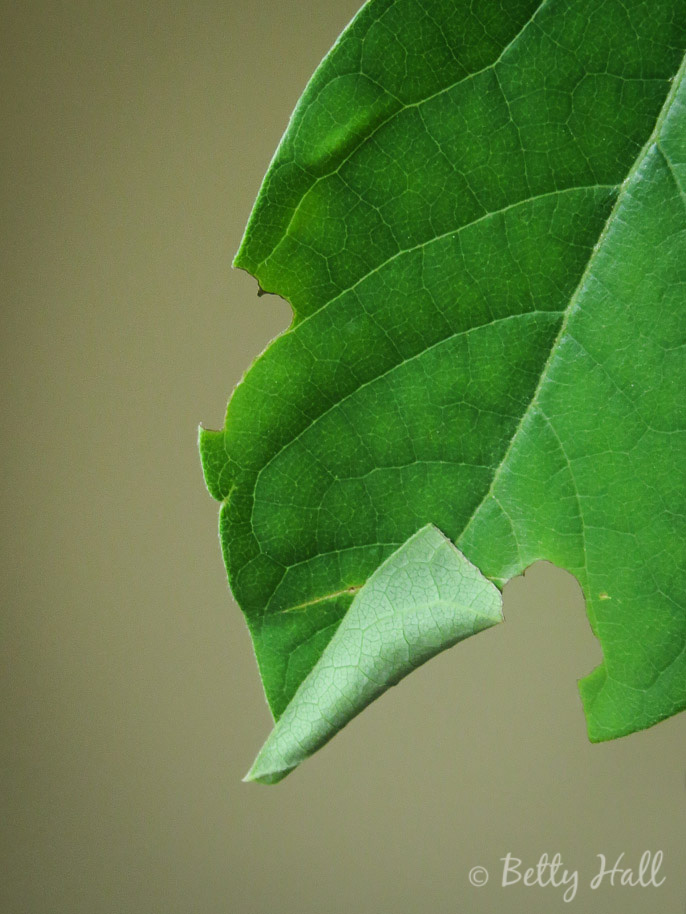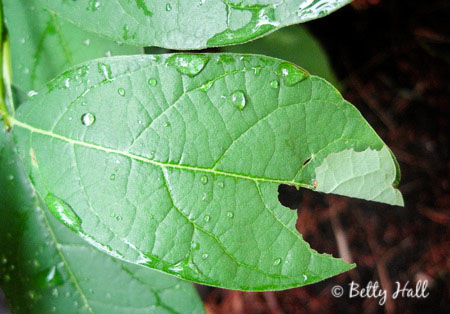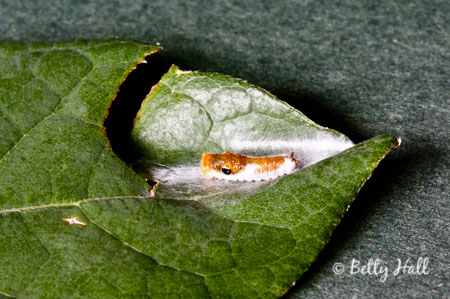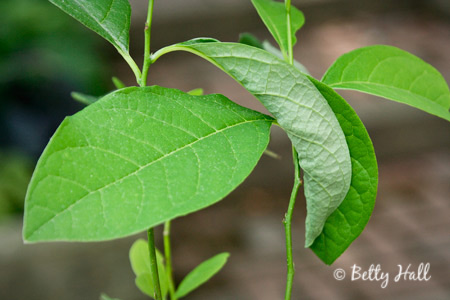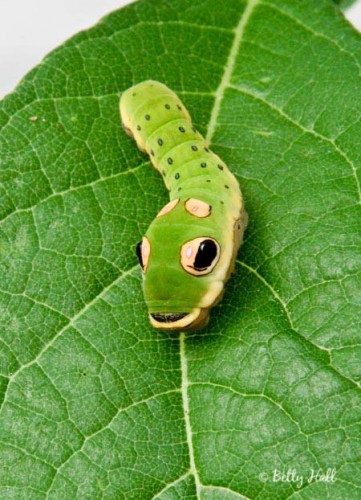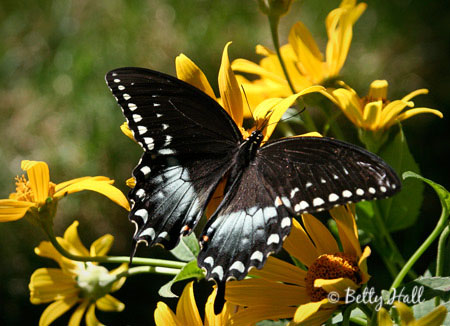I’ve been checking my spicebush (Lindera benzoin) for signs of caterpillars, and when I recently found this folded leaf my hopes were high.
Blog
Spicebush swallowtail caterpillar
These are my favorite caterpillars and I like finding them in the backyard. The first sign is when I find a leaf on my native Kentucky spicebush (Lindera benzoin) cut and folded like this.
When I open the leaf, I usually see a small spicebush swallowtail caterpillar (Papilio troilus).
In a week or so, I often find a large leaf folded in half like this.
When I open the leaf, this is my special treat.
Isn’t it a cutie? Those are false eye spots and the head is actually hidden under what looks like a mouth, but isn’t. The face is supposed to look scary – especially to critters looking for a meal.
The folded leaf is created by a web spun by the caterpillar. It hides there in the daytime and comes out at night to eat.
Eventually, the caterpillar changes into a chrysalis and emerges as a spicebush swallowtail butterfly. These butterflies only lay their eggs on spicebush or sassafras (Sassafras albidum) plants.
Spicebush is one of my favorite native Kentucky shrubs. I appreciate the small yellow blooms that are one of the first signs of spring, and I like the delightful spicy smell of the leaves. And, it’s the host of my favorite caterpillar!
Spicebush is blooming
Spicebush (Lindera benzoin) blooms are the latest sign of spring in the backyard. In my opinion, this is a first-rate shrub for suburban landscapes. This native Kentucky plant is easy to grow and does well in shade or sun.
It has small yellow flowers in early spring and attractive foliage in summer, and female plants have bright red berries in early autumn. The leaves have a pleasant spicy smell when crushed. It can grow up to 15 ft. high but it can be kept to most any size by pruning.
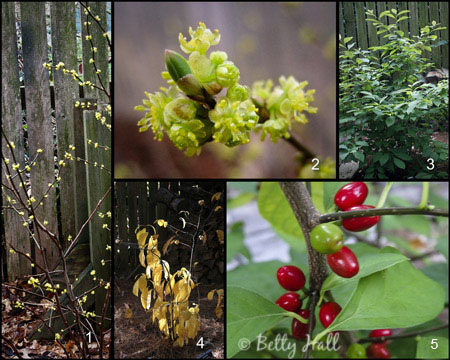
And if that isn’t enough, it’s also the major host plant for spicebush butterflies (Papilio troilus). I wrote about the spicebush caterpillar last summer and these images review the butterfly’s life cycle.
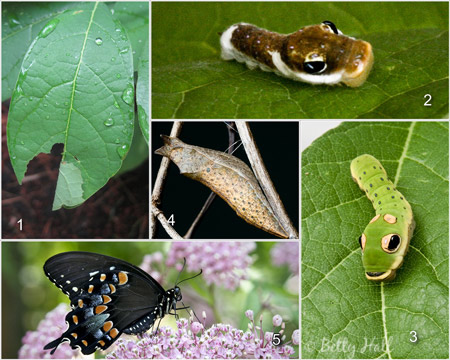
Last summer I found several caterpillars on my two spicebush shrubs and saw the butterflies in the backyard. I’m not sure which I enjoyed more.
Spicebush is fairly common as an understory shrub in our Kentucky woods. Their yellow bloom makes them easy to spot this time of year. I’m glad to find them in the woods and I hope to see more of them in suburban yards.
Sassafras in autumn
